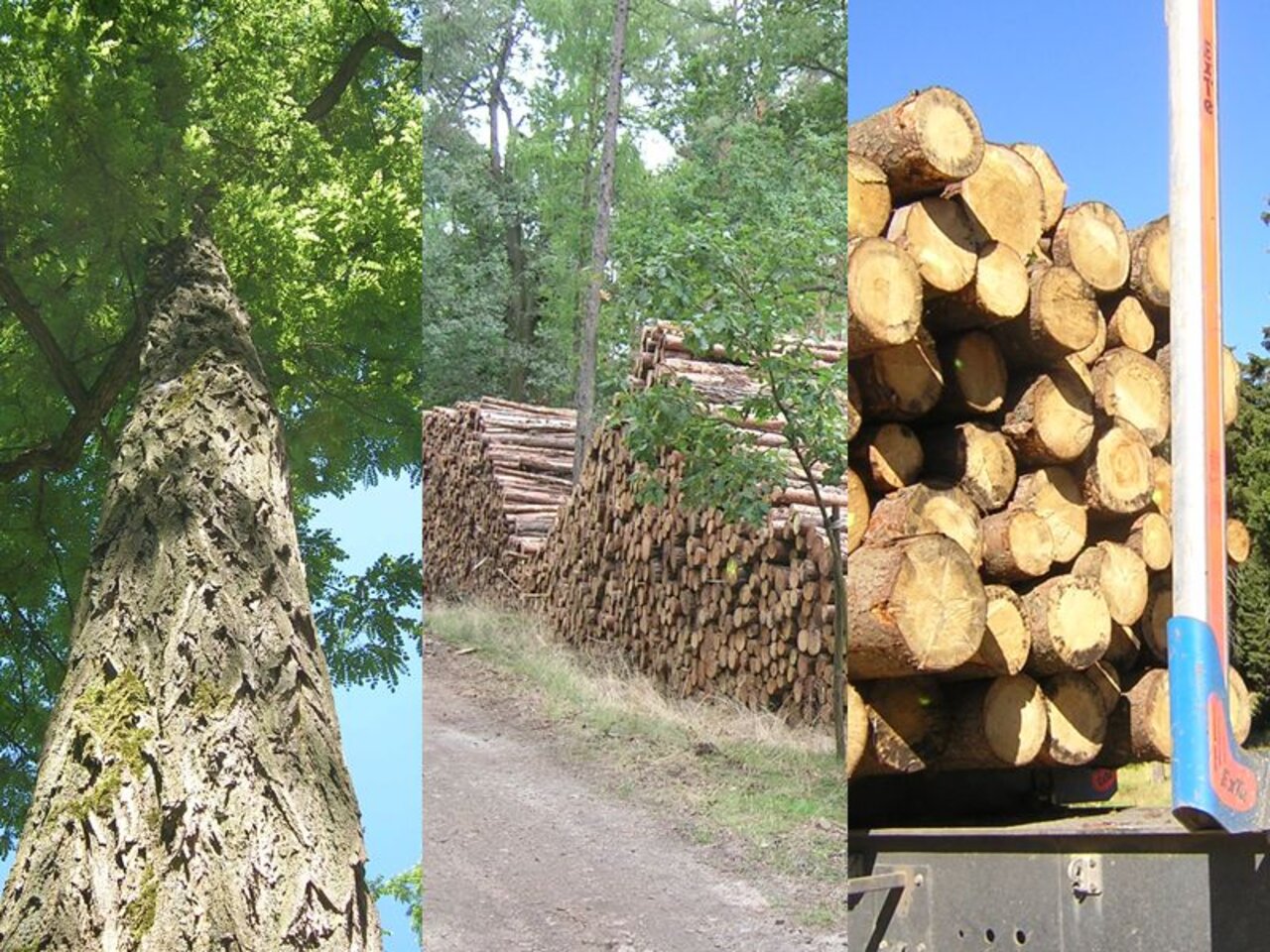Project
National wood market in a global context

Continuous assessment, evaluation, and suitable preparation of wood market statistics for questions from the BMEL
German forest and timber enterprises are integrated into global forest products markets. This has advantages and disadvantages: On the one hand it enables companies to export their products to other countries, on the other hand, competition increases domestically as well. For a successful forestry and timber industry policy, it is therefore indispensable to know how trade in wood-based products is developing on the international timber markets.
Background and Objective
Imports and exports of wood-based products are important indicators for developments on international timber markets as well as on the national market. Therefore, one of the permanent tasks of the Thünen Institute of Forestry is to record and evaluate relevant key figures on foreign trade. The aim is to provide political decision-makers with an important basis of information in connection with analyses of the structure of world trade.
Approach
The bases for our analyses are statistical data on production and trade with wood based products. Depending on the specific question we use appropriate methods and tools.
Our calculations on the development of foreign trade are made as part of the calculations on the wood balances. We consider all wood-based products in foreign trade. This includes all wood-based raw materials as well as semi-finished and finished products. When combining the trade data of the different wood-based products, we use the reference unit cubic meters of roundwood equivalent (m³(r)). This unit is a theoretical figure which expresses how many units of roundwood have been used for the manufacturing of a unit of a specific wood-based product. Consequently, losses of wood during processing are considered.
Results
The foreign trade of the Federal Republic of Germany with wood and wood based products increased continuously since the beginning of the time series in 1950 until around the mid-2000s. As a result of the global economic crisis in 2007, imports and exports declined again in 2008 and 2009 and have recovered since 2010. By 2018, foreign trade volumes had risen again. Already in 2019, before the start of the Corona pandemic, a decline in imports can be observed, which continues in 2020. In 2021, an increase can be observed again. In contrast, exports have been rising continuously since 2013 until 2021.
It becomes apparent from long term analysis that the import surpluses have been decreasing since the mid-1970s until the beginning of the 2000s. A positive German foreign trade balance in wood and wood-based products was first achieved by value in 2002 and by quantity in 2004. Since then, export surpluses have been realised by value, while import surpluses have been recorded again by quantity from 2011 to 2018. In the years 2019 to 2021, there is again a positive foreign trade balance by quantity. The export surplus by value in 2021 was 8.1 billion euros and by quantity 12.9 million m³(r).
The development of the export surplus by value reflects the international competitiveness of wood-based value creation in Germany, but also its dependence on the world market. Especially semi-finished and finished goods structurally characterise Germany's foreign trade in wood and wood-based products; the share of pulp and paper products in particular is high. Foreign trade in roundwood has taken a special development in recent years. Due to the high unplanned volume of roundwood caused by calamities, Germany has been a net exporter of raw wood since 2019.
Links and Downloads
https://www.thuenen.de/en/institutes/forestry/figures-facts/wood-balances/foreign-trade-balance
Thünen-Contact

Involved Thünen-Partners
Duration
Permanent task 1.2001 - 12.2023
More Information
Project status:
finished
List of Publications
- 0
Tandetzki J, Weimar H (2022) Holzpreise: Baustoff und Energieträger. Wirtschaftsdienst 102(7):419, DOI:10.1007/s10273-022-3236-y








